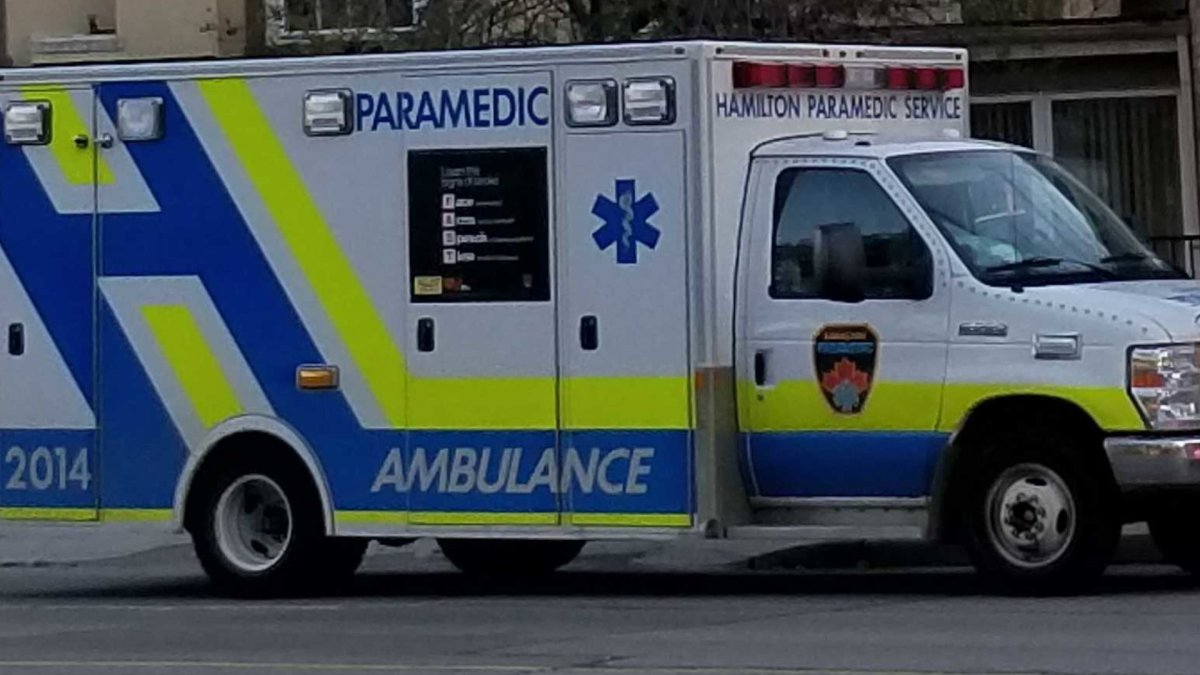A defence expert in clinical decision-making suggested that two paramedics were likely fixated on the words “pellet gun” when dispatched to a central Hamilton Street and shooting victim Yosif Al-Hasnawi in 2017.

Dr. Pat Croskerry, a professor in the critical thinking program with the faculty of medicine at Dalhousie University in Halifax, testified on Monday in the trial of former Hamilton paramedics Christopher Marchant and Steve Snively. They are accused of failing to provide the necessities of life.
Croskerry told defence counsel Jeff Manishen that cognitive biases are becoming more common in the medical field, influencing health care workers to fixate on a particular feature of a case.
“If somebody comes in there and they’re coughing and wheezing and turning blue, then you anchor immediately to that presentation and decide that they have probably got something wrong with their breathing,” Croskerry explained to the court.
Croskerry, a contributor to a number of medical journals on diagnostic processes, submitted a report on the paramedics’ treatment of Al-Hasnawi on Dec. 2, 2017, which ended with Snively and Marchant arriving at St. Joe’s hospital with a patient who had no vital signs.
The physician told the court that a dispatcher mentioning a “pellet gun” in a call out to the paramedics likely swayed their expectations prior to arriving at the scene.
“So, I think on their way to the scene of the accident, they were probably thinking, ‘If this really is what we’ve been told it is, then it’s not likely to be very serious,'” Croskerry said.
- Canadian government’s satellite deal has Tories calling for Elon Musk involvement
- Despite good economic news, experts warn the pain’s not over yet
- Activists call for Boogie the monkey to be removed from Ontario roadside zoo
- Jasper mayor says CN Rail relocation will be devastating: ‘Deeply disappointed’
A number of witnesses, including police and firefighters, have told the court they heard suggestions Al-Hasnawi was shot by a pellet or BB gun during the trial.

Get daily National news
Croskerry says that likely anchored the paramedics on to the pellet gun theory and the pair began to review what such an injury would mean in an assessment going forward.
“If they really do have what the dispatcher has told them, which is a pellet gun injury, which is confirmed at the scene by firefighters, by police and also by bystanders, then I would think that there would be a fairly strong conviction that … that’s what they were dealing with,” Croskerry said.
He went on to say that a “group think” bias can gather momentum and head down a path, making participants less likely to listen to conflicting or challenging information.
Croskerry said the paramedic’s observation of Al-Hasanwi’s wound – characterized by a number of witnesses in the trial as small – likely didn’t contradict the pellet gun theory Marchant and Snively had been exposed to while on scene.
He suggested an examination of the injury with a wound that supports what they’ve been told can create a phenomenon called pseudodiagnosticity — the tendency for people to perceive an outcome as certain while it is actually uncertain.
“It’s not quite confirmation bias, but you interpret what you see as supporting your diagnosis,” Croskerry said. “But you’re wrong, as they were in this case.”
The physician went on to say the paramedic’s questions to friends and family about alcohol, or whether Al-Hasnawi was “acting,” was conscientious in a search for “alternative explanations” of his condition.
Croskerry also said it appears “the situation wasn’t working” for them when Al-Hasnawi was picked up by his brother Mahdi to move the victim to a stretcher.
“I think it was just a confusing time for the paramedics and uncertain about what to do,” according to Croskerry.
Earlier in the trial, medical experts explained Al-Hasnawi’s initial unresponsive then “combative” behaviour was due to hypoxia, a condition in which the body or a region of the body is deprived of adequate oxygen supply at the tissue level.
Croskerry said when the victim hit that stage, it appeared the paramedics made a fundamental attribution error, assuming the patient is responsible for what they’re doing.
“When people say things like, ‘he should get an Oscar’ or he ‘must be acting,’ and then to say to the father, ‘Is your son acting,’ that’s all part of that bias,” Croskerry said.
“Suspecting that the patient is somehow in control of their circumstances and not the situation that they’re in, which is that he’s losing blood.”
The paramedics achieved a “point of no return” in the end when it was decided Al-Hasnawi’s condition was a psychiatric problem and decided on St. Joe’s instead of lead trauma hospital Hamilton General, according to Croskerry.
“They couldn’t really explain the sudden change in vitals,” Croskerry told the court.
“I think that right until they got to St. Joe’s, they continued to believe that the problem was psychiatric.”
Day 29 of the judge-only trial resumes on Tuesday.
Justice Harrison Arrell is expected to hear more from Croskerry when he faces questions from Snively’s lawyer Michael DelGobbo.







_AUG_2_848x480_1291185731741.jpg?w=1200&quality=70&strip=all)


Comments